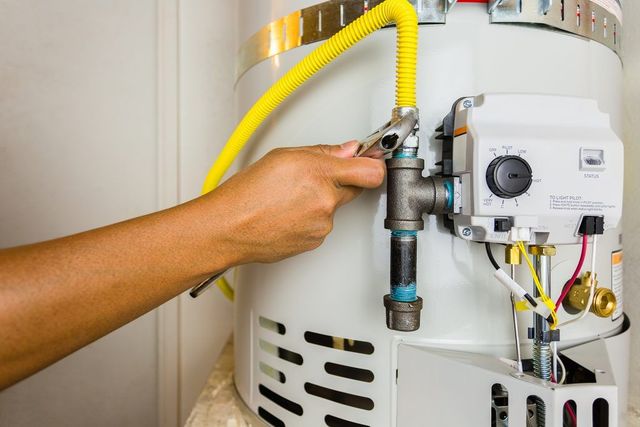How to Maintain Your Home's Hot Water System Properly
How to Maintain Your Home's Hot Water System Properly
Blog Article
Do you find yourself hunting for ideas on Tips on Maintaining a Water Heater?

Warm water is vital for daily comfort, whether it's for a refreshing shower or washing recipes. To guarantee your hot water system runs efficiently and lasts longer, normal maintenance is crucial. This post provides sensible pointers and insights on how to maintain your home's hot water system to stay clear of disruptions and expensive repairs.
Intro
Preserving your home's warm water system might appear complicated, but with a couple of basic steps, you can guarantee it operates efficiently for many years to come. This guide covers everything from understanding your hot water system to DIY maintenance ideas and understanding when to contact professional help.
Significance of Preserving Your Warm Water System
Normal maintenance not just extends the life expectancy of your hot water system yet likewise ensures it runs successfully. Disregarding upkeep can bring about lowered efficiency, greater energy expenses, and even early failure of the system.
Signs Your Warm Water System Demands Upkeep
Recognizing when your hot water system needs interest can protect against major problems. Keep an eye out for signs such as inconsistent water temperature, weird noises from the heater, or rustic water.
Understanding Your Hot Water System
Before diving into maintenance tasks, it's practical to understand the basic components of your hot water system. Usually, this consists of the hot water heater itself, pipelines, anode poles, and temperature level controls.
Monthly Maintenance Tasks
Normal month-to-month checks can help catch minor issues before they escalate.
Flushing the Water Heater
Flushing your hot water heater removes sediment accumulation, boosting performance and prolonging its life.
Checking and Changing Anode Rods
Anode poles stop deterioration inside the container. Inspecting and changing them when broken is critical.
Inspecting and Adjusting Temperature Settings
Adjusting the temperature setups makes certain optimum efficiency and safety and security.
Do It Yourself Tips for Upkeep
You can do several maintenance jobs on your own to maintain your hot water system in top condition.
Checking for Leakages
Consistently evaluate pipelines and links for leaks, as these can result in water damage and higher expenses.
Evaluating Pressure Alleviation Valves
Examining the stress safety valve ensures it works correctly and avoids excessive stress build-up.
Protecting Pipes
Insulating hot water pipelines reduces heat loss and can save power.
When to Call a Specialist
While DIY upkeep is valuable, some concerns need professional proficiency.
Facility Concerns Calling For Expert Help
Instances include significant leaks, electric troubles, or if your water heater is constantly underperforming.
Routine Specialist Maintenance Benefits
Specialist maintenance can include thorough examinations, tune-ups, and making sure compliance with safety and security requirements.
Verdict
Regular upkeep of your home's warm water system is important for performance, durability, and cost financial savings. By adhering to these suggestions and recognizing when to seek specialist help, you can make certain a trustworthy supply of hot water without unanticipated interruptions.
How to Maintain an Instant Hot Water Heater
Before tinkering with your hot water heater, make sure that it’s not powered on. You also have to turn off the main circuit breaker and shut off the main gas line to prevent accidents. Also turn off the water valves connected to your unit to prevent water from flowing into and out of the appliance. 2. When you’re done, you have to detach the purge valves’ caps. These look like the letter “T†and are situated on either side of the water valves. Doing so will release any pressure that has accumulated inside the valves while at the same time avoid hot water from shooting out and burning your skin. 3. When the purge valves’ caps are removed, you have to connect your hosing lines to the valves. Your unit should have come with three hoses but if it didn’t, you can purchase these things from any hardware or home repair shops. You can also get them from retail stores that sell water heating systems. Read the user’s manual and follow it to complete this task properly. When the hosing lines are connected, open the purge port’s valves. 4. You should never use harsh chemical cleaners or solutions when cleaning your unit. Make use of white vinegar instead. It should be undiluted and you’ll probably use about 2 gallons. 5. Now flush your water heater. This task should probably take about 40 minutes. We can’t give you specific directions for this because the procedure is carried out depending on the type, model and brand of your heater. With that being said, refer to the user’s manual. 6. When you’re done draining the unit, you have to turn off the purge port valves again. Remove the hosing lines that you earlier installed on each of the water valves. Put the valve caps (purge port) back in their respective places and be very careful so as not to damage the rubber discs that are found inside these caps. 7. Now that everything’s back in place, check your user’s manual again to find out how to reactivate your water heating system. 8. Once it is working, turn one of your hot water faucets on just to let air pass through the heater’s water supply pipes. Leave the tap on until water flows smoothly out of it. https://www.orrplumbing.com/blog/2014/september/how-to-maintain-an-instant-hot-water-heater/

I came across that article on Tips on Maintaining a Water Heater when surfing the internet. Those who appreciated our post if you please make sure you remember to pass it around. Thanks for your time spent reading it.
Explore Now Report this page